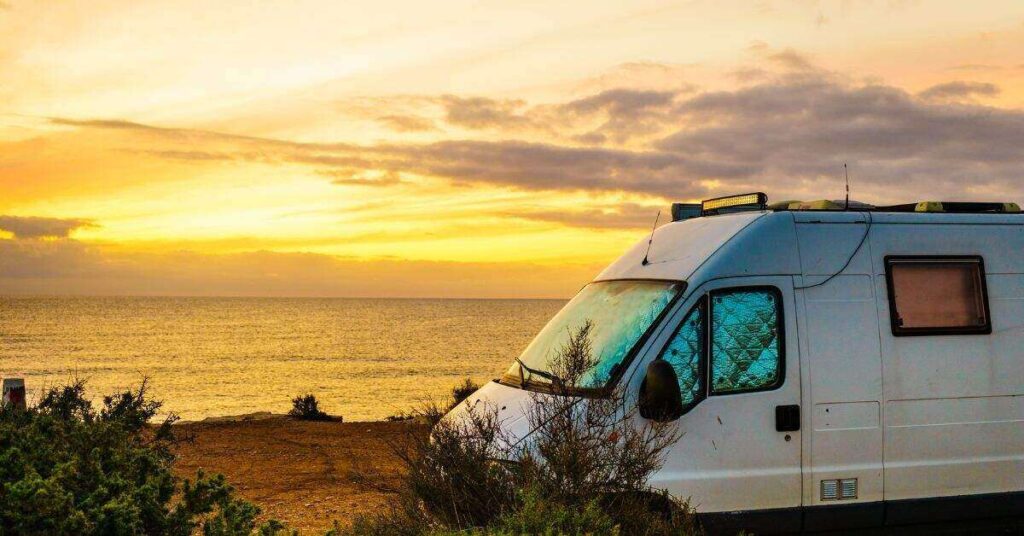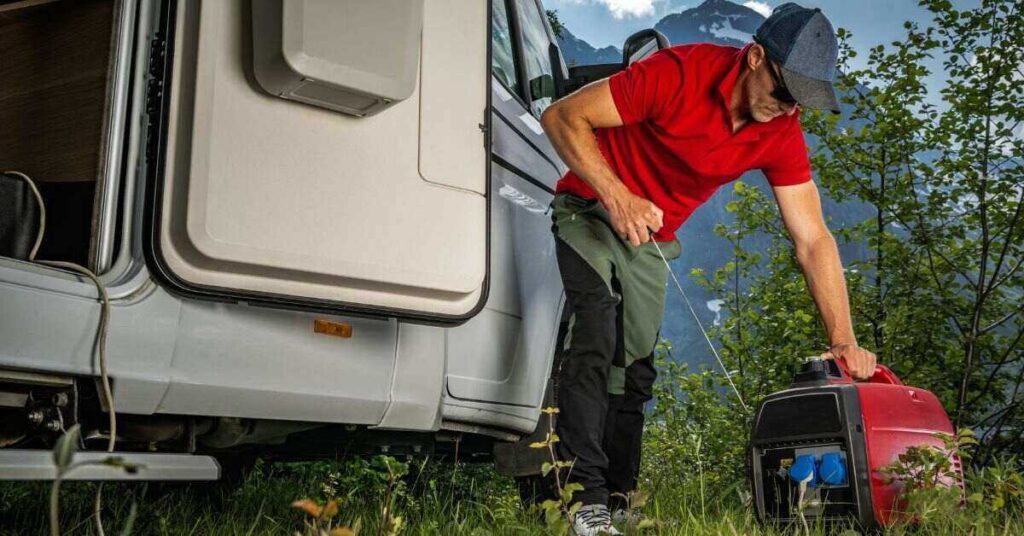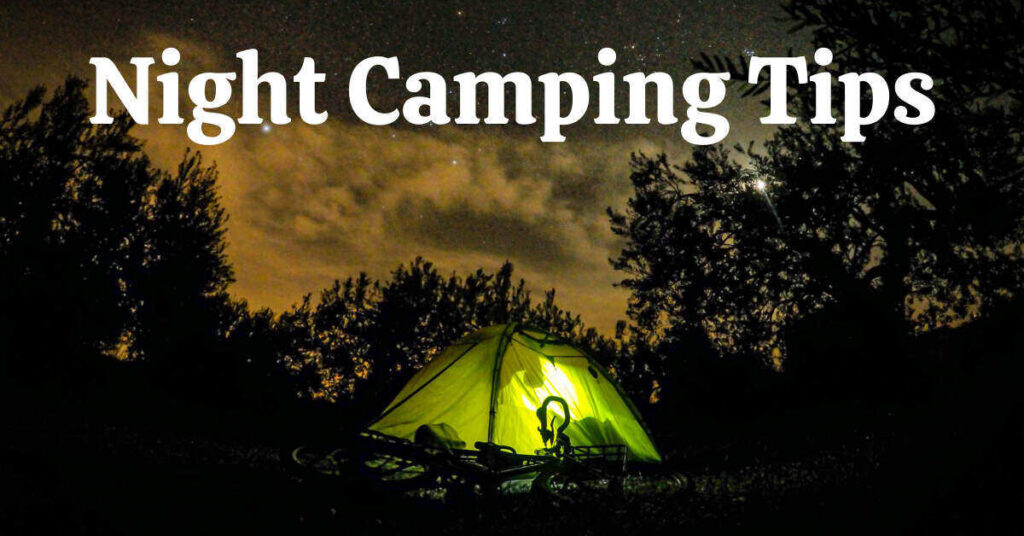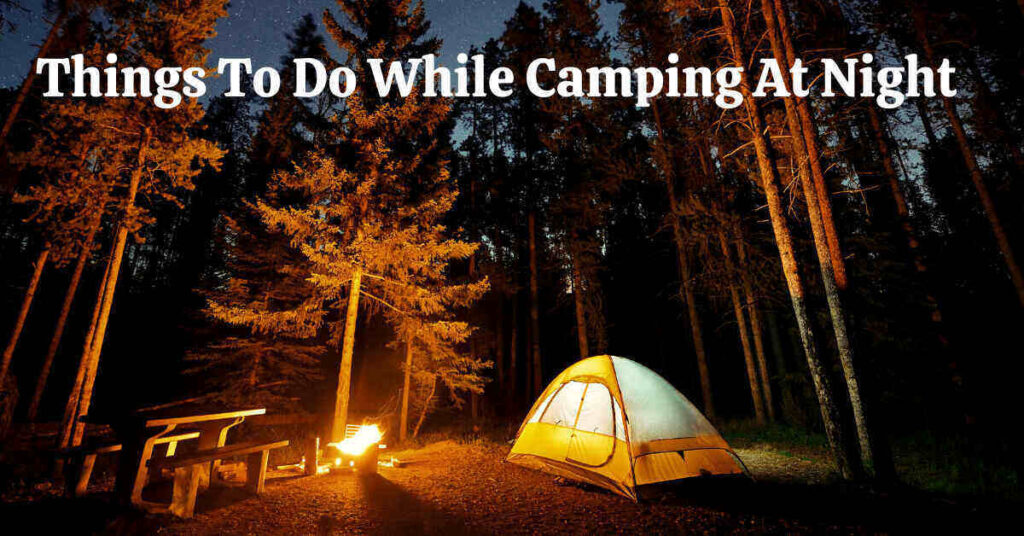In the world of outdoor enthusiasts and adventurers, the term “dry camping” has gained prominence as a unique and thrilling way to reconnect with nature. Unlike traditional camping experiences, dry camping delves into the realm of self-sufficiency. It invites individuals to immerse themselves in the wilderness without the luxury of readily available amenities. In this post, we will discuss the definition of dry camping in detail. Let’s get started:
What Does Dry Camping Mean?
Dry camping is when you camp without any hookups for water, electricity, or sewer. It’s the ultimate way to disconnect and find freedom in the great outdoors.
Picture yourself parking your RV or pitching your tent in a secluded spot, far away from the noise and distractions of everyday life. You can hike, fish, stargaze, or simply relax without any constraints. Dry camping allows you to embrace simplicity and self-sufficiency.
Advantages of Dry Camping
Dry camping, also known as boondocking, offers several distinct advantages:
- Secluded Natural Beauty: Dry camping provides an escape from crowded campsites, offering a serene and private environment surrounded by pristine natural landscapes.
- Self-Sufficiency and Resourcefulness: Campers must manage their water, energy, and waste. This promotes a deeper understanding of conservation and sustainable practices.
- Cost Savings: Unlike traditional campgrounds with fees for amenities, dry camping spots are often free or have minimal costs. This makes it an appealing option for budget-conscious adventurers.
- Skill Development: Dry camping cultivates essential survival skills as campers navigate without modern conveniences, honing problem-solving abilities. It also boosts outdoor proficiency, resulting in increased empowerment and confidence.

Disadvantages of Dry Camping
Here are the two main disadvantages of dry camping:
- Limited Amenities: Campers lack access to electricity, water hookups, and restroom facilities, which can lead to inconveniences and discomfort, especially during longer stays.
- Resource Constraints: Dry camping necessitates careful management of resources such as water and energy. While this promotes self-sufficiency, it can also be limiting, requiring campers to ration their supplies and potentially curtail certain activities. For instance, there may not be sufficient water for cooking and personal hygiene.
Essential Equipment
Here are eight essential pieces of gear to carry when embarking on a dry camping adventure:
1. Fresh Water Storage and Filtration
A reliable clean water supply is crucial for cooking, drinking, and hygiene. Carry water containers or a portable water tank to store an ample amount of fresh water. Additionally, a water filtration system or purification tablets will enable you to refill containers from natural sources, ensuring safe consumption.
2. Power Generation
Since traditional electrical hookups are absent during dry camping, power generation equipment is essential. A high-capacity deep-cycle battery or a portable solar panel system can provide energy to charge devices, power lights, and run small appliances.
3. Proper Waste Disposal
Responsible waste management is vital. Carry sturdy trash bags and containers for collecting and storing waste. If your camping spot lacks restroom facilities, a portable camping toilet ensures a hygienic solution.
4. Cooking Supplies
Camp stoves, fuel canisters, and cooking utensils are indispensable for preparing meals. Opt for a compact, easy-to-use stove that suits your cooking needs.
5. Outdoor Furniture
Portable camping chairs, a foldable table, and a comfortable mat enhance your outdoor living space and provide a comfortable area to relax and dine.
6. Navigation Tools
Accurate maps, a reliable GPS device, and a compass are essential for navigating remote areas, preventing getting lost, and ensuring a safe return to your campsite.
7. Communication Devices
A fully charged cell phone, a two-way radio, or a satellite communication device can be crucial for emergencies or staying connected when venturing off the grid.
8. Emergency Supplies
Pack a comprehensive first aid kit, flashlight with spare batteries, multi-tool, fire-starting equipment, and extra clothing layers. They will help you prepare for unexpected situations and changes in weather.
Choosing the Right Location for Dry Camping
Selecting the perfect spot for your next dry camping adventure is crucial.
When selecting the optimal dry camping spot, consider several key factors. Prioritize safety by choosing well-traveled areas with good cell reception and emergency access.
Look for level ground to ensure comfortable sleeping and setup. Seek spots away from flood-prone zones and low-lying areas to avoid weather-related risks.
Check local regulations to confirm whether overnight camping is permitted. Choose spots with natural barriers for privacy and wind protection. Ensure proximity to water sources, but respect Leave No Trace principles by camping at least 200 feet away.
Safety Tips for Dry Camping
Safety is paramount when dry camping; being prepared can make all the difference. Before you set out, double-check that your first aid kit has essentials like bandages, antiseptic, and pain medication.
Familiarize yourself with the nearest hospital or medical facility, as well as the contact information for local emergency services. In the event of an emergency, having this information readily available can save precious time. Another important safety tip is to ensure someone knows where you went dry camping.

Planning and Preparation
To ensure a successful dry camping adventure, here are four essential things to consider:
- Self-sufficiency: Embrace the freedom of being self-reliant by bringing enough supplies to sustain yourself during your entire trip.
- Minimalism: Leave behind the unnecessary and embrace a simpler lifestyle. Pack only what you truly need.
- Adaptability: Be prepared to adjust your plans and expectations, as dry camping often requires flexibility. Embrace the spontaneity and go with the flow.
With these principles in mind, you’ll be well-prepared to embark on a liberating and fulfilling dry camping adventure.
Related: Van Camping Tips for Beginners
Common Challenges and Solutions in Dry Camping
Dry camping presents a range of challenges that can test even the most seasoned outdoor enthusiasts. Here’s a list of common challenges and their solutions:
Limited Water Supply
- Solution: Carry ample water storage containers and a reliable water filtration system to safely source and treat water from natural sources like rivers or lakes.
Energy Management
- Solution: Invest in high-capacity deep-cycle batteries, portable solar panels, or generators to recharge devices and power essential equipment.
Food Preparation
- Solution: Pack a portable camp stove, fuel canisters, and a compact cookware set. Carry dehydrated or non-perishable foods to simplify meal planning.
Comfort and Privacy
- Solution: Bring camping chairs, a foldable table, and a tent that suits your needs. Choose spots with natural barriers and level ground for added privacy and comfort.
So now you know all about dry camping! With the right equipment and preparation, you can embark on unforgettable dry camping adventures and make lasting memories.
Frequently Asked Questions (FAQs)
What is another name for dry camping?
Another name for dry camping is “boondocking.” It refers to camping in remote areas without access to traditional amenities such as water, electricity, or designated campsites. It requires campers to be self-sufficient and resourceful.
Is dry camping legal?
The legality of dry camping varies by location and regulations. Many public lands, such as national forests, permit dry camping. However, it’s essential to research and adhere to local rules, obtain necessary permits, and respect Leave No Trace principles to ensure responsible and legal dry camping.
Why is it called dry camping?
Dry camping earned its name due to the absence of traditional amenities like water and utilities. Campers must rely on self-sufficiency, bringing their resources for water, power, and other necessities. This style of camping emphasizes a self-reliant and minimalist approach to outdoor living.
How do you get water when dry camping?
Obtaining water during dry camping involves storing water in containers or portable tanks before your trip. Additionally, you can source water from nearby natural sources like rivers or lakes, then use a water filtration system or purification tablets to ensure it’s safe for drinking and cooking.
Related: Camping with Kids Hacks




